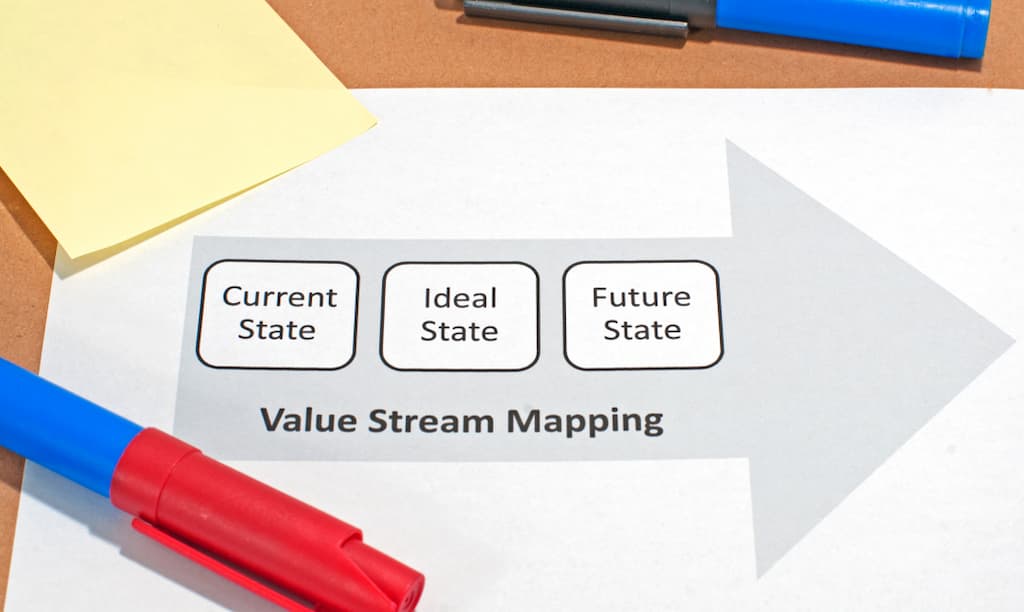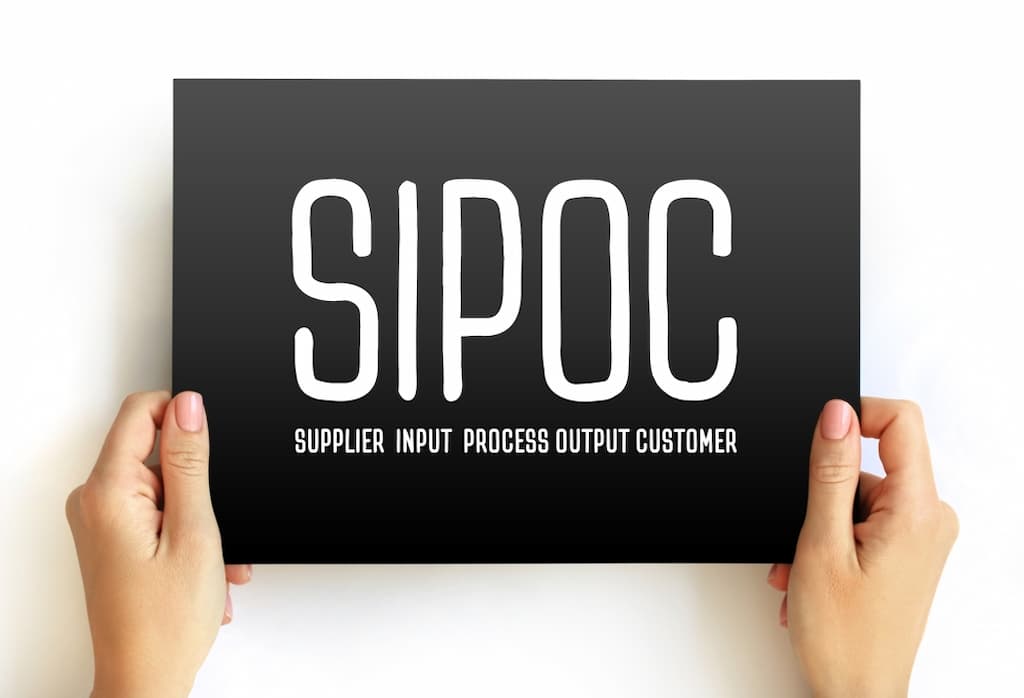As a business owner, you understand the importance of operating efficiently. For many, this means there needs to be a conscious effort to streamline business processes. Whether you run a company that ships products, sells software, or treats patients, streamlining processes can go a long way in improving your bottom line. Our business process improvement consultants at Cultivate Advisors are here to guide you and assist your company with establishing streamlined processes. In this guide, we will help to streamline processes and workflows, providing you with helpful tips and guidance to help you reach your goals.
What Does It Mean to Streamline a Business Process?

If you’re looking to improve business processes, you can streamline them. This means that you eliminate unnecessary work-related tasks in your current process to help boost productivity within your organization. There are both formal and informal approaches to streamlining business processes that you can consider.
A formal process is referred to as procedures, meaning that there are well-established and documented steps of which your employees are aware. For example, some of your current processes that are formalized might revolve around submitting invoices or onboarding new employees. These types of existing processes are helpful for legal, financial, or safety-related processes within your company.
Informal processes are typically created on your own, and they may or may not be documented. This could include processes around lead communicating or noting meeting action items.
Processes vs. Workflows: What Is the Difference?
Although there are similarities between business processes and business workflows, they are not the same thing. Here’s what you should know about them:
- Process: A set of repetitive tasks and activities that need to continue in order to reach a desired outcome within the organization.
- Workflow: A set of repeatable activities that need to continue to complete a specific task.
Businesses and organizations typically participate in workflows and processes that are unique to their overall business operations and in their field.
Who Can Benefit from Streamlining Business Processes?
If you’re looking into process improvement and you’re hoping to automate processes, know that the approach varies among organizations. Despite the nuances in each approach, there are many benefits to having a streamlined business process across industries and within business divisions:
- Human resources departments and administrative teams that focus on onboarding;
- Marketing and sales to assist with follow-up email distribution;
- Divisions focused on customer relationship management;
- Procurement to assist with product orders;
- Finance and accounting to assist with vendor invoice submissions;
- IT departments to help with password resets;
- Asset management teams to help with inventory and asset discovery;
- Compliance documentation, such as quarterly reporting;
- Project management and task notification.
Top 5 Benefits of Streamlining Business Processes

Business process automation and business process management come with a host of benefits to your company. We’ve outlined only a handful that you can consider to improve the operations of your company.
1. Operate More Cost-Efficiently
If you can streamline business processes, you reduce the amount of time that your employees spend on certain tasks. This can help reduce the volume of staff that you need and save your company money in the long run. As a result, you’ll be able to allocate funds elsewhere and cut out unnecessary steps.
2. Increase Productivity
By improving your process workflow, your employees will likely become more productive in their roles. As their tasks and operational processes are streamlined, they are better able to predict what their daily workloads will be like. They can also focus more on improving quality by not rushing through small and unnecessary steps that could derail their progress.
3. Better Communication
Stemming from efficient processes is better communication between employees and departments. Process mapping helps to better track tasks that are completed, and employees can spend less time communicating with one another and more time focusing on the time-sensitive tasks on their plate.
4. Improved Time Management
Tedious and time-consuming tasks can lead to missed deadlines within your existing workflow. Alternatively, streamlining workflows helps employees better manage and prioritize their tasks, focusing their energy on what’s most important.
5. Reduce Risk
Businesses with a streamlined process have more transparency in what employees are doing with their time. This makes it easier to identify mistakes or overlooked deadlines from one vantage point.
How to Streamline Your Work Processes
Now that you have a better understanding of the benefits of streamlining business processes let’s delve into the specific steps that you can take to do so.
Step 1: Map the Process
As soon as you’ve identified a certain process that you want to improve, it’s important that you thoroughly map it out before immediately taking action without thinking it through. You can use various tactics, such as a flow chart or a swim lane diagram, to visually represent the steps in your process. Generally, swim lane diagrams are more complex than flow charts but they are ideal for processes that include several people or groups.
Regardless of the method that you choose, it’s important that you include enough detail, including mapping out the sub-steps, so that everyone is able to follow them with precision. Make sure that you loop in those who will be using these processes to ensure nothing is missed and that the automated workflows are as helpful as possible in reducing unnecessary tasks.
Use Different Streamlining Techniques
Streamlining techniques are helpful in improving various processes across your organization, but there isn’t a one-size-fits-all approach to process changes. Here are some new processes that you can consider implementing:
- Flowcharts: These are easy-to-understand diagrams that outline how various process steps fit together.

- Swimlane diagrams: This helps to establish accountability by placing activities and tasks in a swimlane of the department, team, or employee.

- Value stream mapping: This is a lean enterprise technique that is used to improve the flow of materials and information when producing a product or service.

- SIPOC: Stands for suppliers, inputs, processes, outputs, and customers. This is a visual look at business processes.

Having conversations with the people who are impacted by these processes gives you insight into what they think is wrong and if there are any suggestions for improvements. For example, your accounts team interacts with different processes than your finance team and therefore likely requires different tasks.
Step 2: Analyze the Process
You can use tools like the flow chart or swim lane diagram to look at your existing process and determine where improvements can be made.
- Where are there frustrations with team members or customers?
- Are there steps in the workflow process that are creating bottlenecks?
- Where do costs increase and quality decrease?
- Are deliverables executed in a timely manner or are they delayed?
Make sure you’re looking at the root cause of issues in your day-to-day processes as only addressing the symptoms will cause further issues. You’ll also want to speak with those who are impacted by the process to see if they have any suggestions for continuous improvement.
Once you’ve established a direction for one team, make sure to consider how it can impact other teams across the organization who might be experiencing similar roadblocks to productivity and success.
Step 3: Redesign the Process

Once you have a complete understanding of the root cause of the issues and you’ve been able to identify bottlenecks, you can start to streamline processes through a complete redesign. Again, the best practice is to work with those who are directly involved as they have the best information about which approaches will be the most successful. Compile the ideas and narrow them down to what would translate best in a real-world context. By getting in touch with these team members early on in the process, they are able to feel more connected to the initiative and process changes as opposed to solely being thought of afterward.
As soon as you have their buy-in, make sure that each team member understands the goal of the new processes and workflows. If more than one process is being talked about, you can conduct impact analysis, risk analysis, or failure mode and effects analysis to determine the potential downsides of each. Once you’ve agreed on a process, you’ll need to create new diagrams to carefully document each step of your new business process.
Step 4: Gather the Needed Resources
The next step in process improvement is to gather the resources you’ll need to implement the process. This could mean many things: getting guidance from colleagues in other departments such as IT or HR. Communicate across these groups and make sure that they’re aware of how processes and workflows will change in the future, emphasizing how streamlining repeatable tasks can lead to higher employee satisfaction and saving valuable resources. In some cases, you’ll need to put together a business case.
Step 5: Communicate & Implement the Changes
In most cases, you’ll need to alter existing processes and teams to make the change successful. For example, maybe you look into project management software or business process management software for help along the way. In other cases, you’ll need to hire new team members or implement training on the changes. Make sure to factor in time for training your employees and even consider a pilot program that helps identify potential problems with your process improvement approach.
Tips to Improve Processes At Your Company

Whether you are looking to improve customer engagement or you need an automated workflow to streamline processes, there are many advantages to process automation that you might not have previously considered. We’ve outlined various tips on how to improve existing processes.
1. Study the Process before You Automate It
Rather than taking immediate action, it’s important to thoroughly analyze the strategy behind your decision to automate processes. Visually map out the process before taking action, and make sure to identify redundancies or steps that aren’t serving your team. For example, maybe your finance team is under more stress during the month-end close, which means they can follow a procedure that helps to improve automation through finance tools. Each department has unique needs, and it’s essential that you improve business processes through a strategic mindset instead of as a rushed process.
2. Applications First, Tech Later
While it’s appealing to leverage every technology solution that you can think of, you shouldn’t create your workflow process around these specific apps and CRM solutions. Conversely, you should determine which processes are redundant and develop a customized solution. In some cases, tech-driven solutions can be helpful, but they shouldn’t be your starting point.
3. Check the ROI of Automation
An efficient operation should always have a strong ROI. You’ll want to use data to ensure that the valuable resources that you’re using to improve processes will be worth it in the big picture. Maybe your HR department spends thousands of dollars to automate its employee training program but it only saves a few hundred dollars in the big picture, of course, this is a waste of money. The point of reducing repetitive tasks and running an efficient operation is to cut back on time and money.
4. Think Long Term
The long-term impact of your initiatives should always be considered. Consider that implementation can take up to a year, so you’ll want to start with a multi-year plan for your ROI. It’s important to leave room for growth and think beyond a quarterly or annual cycle.
Improve Your Efficiency with Cultivate Advisors
Maximum efficiency and improved productivity start with Cultivate Advisors. Our Chicago-based team of business advisors has extensive experience evaluating existing processes across industries and can assist you in putting together a plan to enforce accountability and insight change within your organization. Allow us to assist you in improving revenue generation and help you meet industry standards to hit your goals. Get in touch with us today to learn more about performance improvement consulting.







